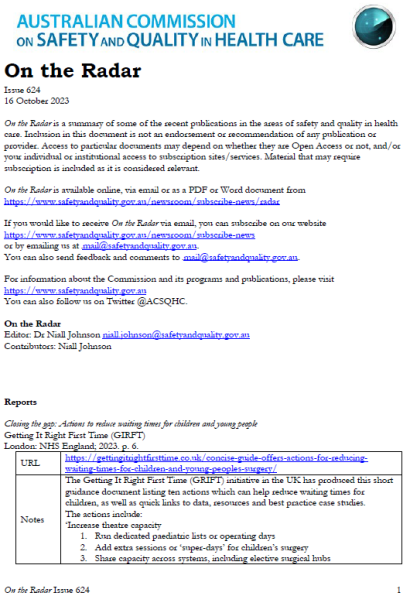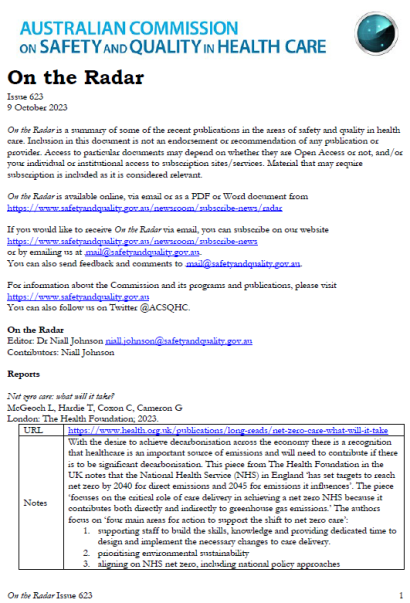This tool is designed to be used as a guide for developing and recording a training session, using the resources from NHHI’s LMS eLearning module The Basics of Infection Prevention and Control: Train the Trainer module and your own experience.
This issue includes items on surgical waiting times, joint replacement, clinical quality registries, value-based health care, COVID-19 and more.
Also covered are early online papers from BMJ Quality and Safety and International Journal for Quality in Health Care along with the latest from the UK’s NICE.
Connecting NHHI LMS and HHCApp profiles is important as it automates the annual auditor validation process.
Connecting NHHI LMS and HHCApp profiles is important to automate the annual auditor validation process.
This technical report complements AURA 2023. It presents comprehensive analyses of antimicrobials supplied under the PBS and RPBS in 2022, and local area level data and trends from 2015.
The role of the Osteoarthritis Clinical Care Standard Topic Working Group was to provide expert advice on the development of the first version of the Osteoarthritis of the Knee Clinical Care Standard published in 2017.
This sample dashboard was for GP Practices considering participation in the Patient-Reported Indicator Surveys, known as the PaRIS Health Survey, in 2023.
Depending on the patient responses for the practice, the dashboard mock-up illustrates the type of practice-level data that participating GP Practices may be able to access if they took part in the OECD initiative.
Please note that data visualisations shown are an example only and subject to change.
On the Radar Issue 623 is now available.
This issue includes items on net zero healthcare, mental health, COVID-19 and more.
Also covered are the latest issues of Clinical Communiqué, Australian Health Review, Health Affairs and Health Affairs Scholar and early online papers from BMJ Quality and Safety and International Journal for Quality in Health Care along with the latest from the UK’s NICE and NIHR.








